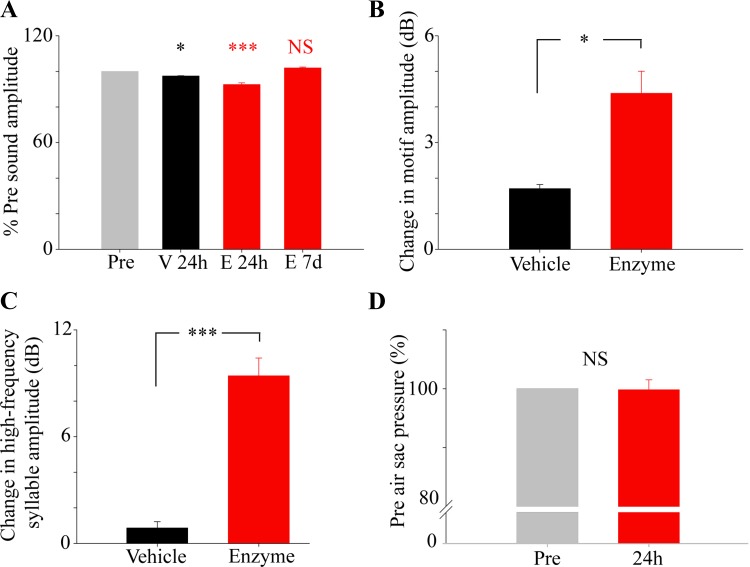Fig. 3.
Sound amplitude is reduced, especially in high-frequency syllables, after heparitinase treatment, whereas the driving air-sac pressure remains unchanged. A: the percentage of preinjection amplitude of song at 24 h for heparitinase-treated birds and at 24 h for vehicle-treated birds (V) shows that both groups have a significant change in amplitude 24 h after treatment. However, there is a greater change in enzyme-treated birds (E) compared with pretreatment levels (vehicle mean = 98.6% ± 0.94; P < 0.05; enzyme mean = 92.6% ± 1.01; P < 0.001). B: the reduction in decibels of the song amplitude 24 h after injection of heparitinase or vehicle-treated birds. Both groups show a reduction, however, treated birds show a significantly (Student's t-test, P < 0.05) larger decrease in sound amplitude than the vehicle controls. C: high-frequency syllables show the greatest change in amplitude. Whereas vehicle-treated birds showed little loss of amplitude, amplitude was reduced by almost 10 dB (P < 0.001) in enzyme-treated birds. D: pressure remains unchanged at 24 h after injection compared with preinjection levels in heparitinase-treated birds, indicating that the loss of amplitude is not due to reduced air-sac pressure (data are presented as mean percentage ± SE, n = 4 for vehicle, n = 6 for enzyme threated; *P < 0.05; ***P < 0.001; NS, not significant).

